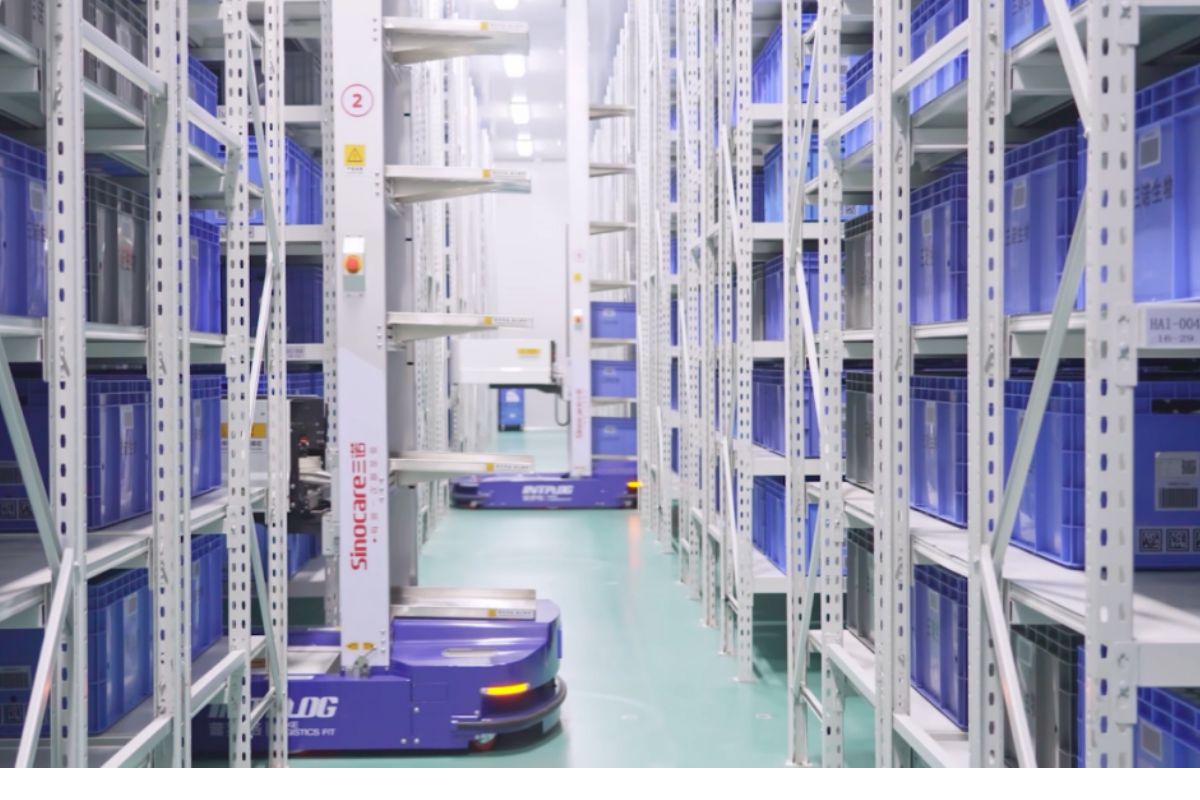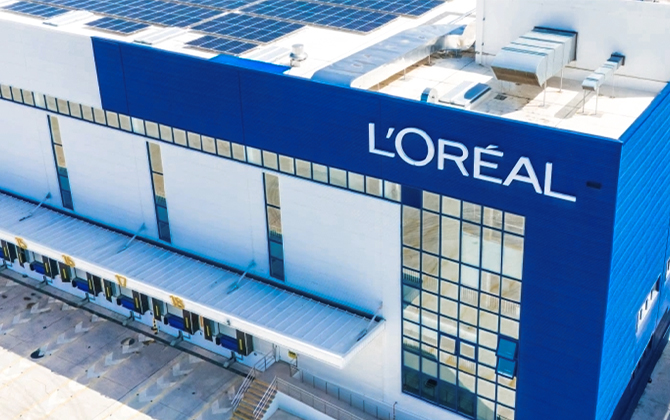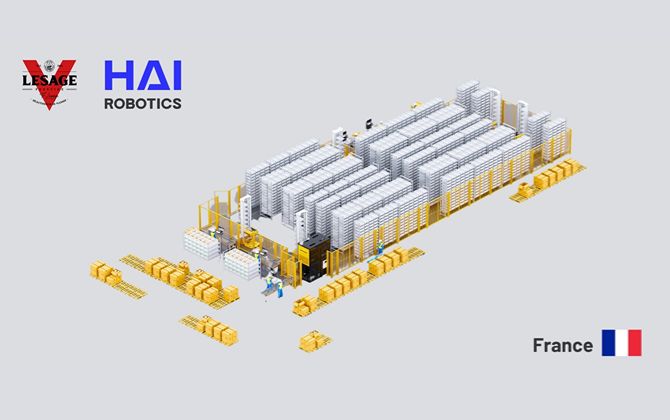Sinocare and Hai Robotics Join Forces to Facilitate the Upgrade of Healthcare Logistics
Sinocare, Asia's largest blood glucose meters manufacturer, recently joined forces with Hai Robotics to implement a complete set of ACR systems in their warehouse. Hai Robotics provided a deeper smart technology integration and development of in-plant logistics in the healthcare facility.
Hai Robotics, the pioneer in Autonomous Case-handling Robot (ACR) systems for warehouse logistics, provided a deeper smart technology integration and development of in-plant logistics in the healthcare facility, delivering higher workflow efficiency rates and lower labor costs. Li Zhi, Senior Manager of Sinocare’s Engineering Department, said, “The strategy of digitized and smart supply chain transformation, with the ACR systems' help, will continuously foster Sinocare's business growth now and far into the future."

ACR systems stimulate operational efficiency
ACR solutions provide a more efficient, easy, and accurate way to manage materials throughout warehouse operations. These solutions use HaiQ, a warehouse software management system developed by Hai Robotics, as the brain that manages all the processes enabling effective responses to fluctuate demands and navigating complex logistical challenges within the facility while maintaining maximum efficiency.
To meet the high demands of Sinocare’s flexible production line, Hai Robotics' custom ACR solution was implemented to manage the movements of semi-finished products as part of the manufacturing process and in storage. The ACR system is fully integrated with Sinocare’s existing Manufacturing Execution System, helping to provide whole-process digitization of goods management. This integration now allows operators to easily and accurately manage inventory, monitor the handling of products, and track the movements of inbound and outbound goods. As a result, Sinocare was able to achieve significant advancements in warehousing and manufacturing collaboration.
ACR systems improve storage density
Sinocare’s Changsha warehouse storing semi-finished products covers an area of 1,000 square meters (about 3,280 square feet) and there was a need to store more goods while staying within the same storage footprint. By implementing Hai Robotics’ high-density ACR system, Sinocare was able to increase its storage capacity from 7,500 totes to 12,000 totes. This increased the average storage density to about 13 totes per square meter.
Hai Robotics’ ACR solution was able to achieve these metrics and enhance storage density largely due to 2 key contributors. The first, Hai Robotics' ACRs are able to operate in tight spaces, most importantly in aisles under 1.2 meters (4 feet) wide. The second, 2 totes can be placed one in front of the other on a shelf and two shelves placed back-to-back, effectively realizing double-deep shelving and reducing the total number of aisles and creating a high-density storage unit that is 4 totes deep and accessible from 2 sides. These shelving units were then stacked to 4.4 meters high (about 14.5 feet) throughout the warehouse.

ACR smart picking liberates manpower
Traditional warehouse management relies heavily on manual labor, which presents many challenges regarding availability, costs, and efficiencies. While other companies are gaining ground with the use of efficient automation. For facilities that still operate manually, normal human error, slow and low-efficiency operations, and natural physical limitations often result in a delay in facility maintenance, expired storage, and failure to replenish parts in a timely manner when inventory is low. These issues can create major problems for operations. Sinocare recognized the need to automate to enhance the productivity of their workers and maximize workflow efficiency.
Sinocare’s Changsha warehouse was able to double its per-worker efficiency rate with the implementation of whole-process automated storage and handling of totes containing their semi-finish products while reducing the strain of previously laborious tasks. When inbound goods are received, a robotic arm grabs the loaded totes and places them on a conveyor belt. Hai Robotics’ Autonomous Case-handling Robots then retrieve the totes and deliver them to appropriate locations on shelves in the high-density storage area. When it is time for goods to move out of storage, Hai Robotics’ ACR retrieves the tote from storage and transports it to a temporary storage shelf where an AGV then brings the goods to a production line. The automated solution also helps to create a better work environment for people. Operators can now track and manage the system from a dashboard without strenuous work.
Unlocking the potential in healthcare warehousing
Founded in 2002, Sinocare is a leading high-tech enterprise committed to using biosensor technology to produce and sell products for the rapid detection of diabetes and other chronic diseases. As the largest manufacturer of blood glucose meters and test strips, Sinocare has taken over 50% of China's retail market of blood glucose meters.
Together with Hai Robotics, the pioneer in Autonomous Case-handling Robot (ACR) Systems, Sinocare aims to build an warehousing system for semi-finished products to unlock the potential of healthcare warehousing.

About Hai Robotics
Hai Robotics is the pioneer in Autonomous Case-handling Robot (ACR) systems. We are committed to condensing our customers’ storage footprint with equipment that effectively manages ultra-high-density storage, boosts facility throughput with increased order pick accuracy & speed, maximizes workflow efficiencies, and significantly improves worker productivity while reducing manual labor.
Our high-capacity ACRs have a compact design with a reach of up to 10 meters (32+ feet) high. Combined with our highly smart software, our robotic equipment efficiently manages the storage and movement of material while improving worker efficiency by 200%-300%. Our solutions increase storage density by 80%-130% while maintaining full access to goods at all times.
Hai Robotics’ solutions are being used in over 500 projects in warehousing, distribution, and manufacturing facilities worldwide. Currently, 3PL, e-commerce, apparel, retail, grocery, automotive & manufacturing, electronics, and pharmaceutical industries are already turning to HAI ROBOTICS to enhance and accelerate their operations.
Hai Robotics’ HaiPick robots were the first autonomous case-handling robots to be put into commercial use and we continue to advance, enhance, and accelerate facility operations today.
About Sinocare
Sinocare has 20-year experience in BGM (Blood Glucose Monitor) industry since its foundation in 2002. It is the biggest BGM manufacturing facility company in Asia and the first listed blood glucose meter company in China, dedicated to the innovation of biosensor technology, development, manufacturing, and marketing of rapid diagnostic testing products. In 2016, after the successful acquisition of Nipro diagnostic Inc. (now renamed Trividia Health Inc.) and PTS Diagnostics Inc., Sinocare had become the world's No.5 largest blood glucose meter manufacturer and one of the leading companies in the POCT industry in the world.
Suggested
Downloads

How pharmaceutical leader Sinocare triumphed over inefficient workflows, insufficient storage space, and outdated paper management by partnering with Hai Robotics.

Download our latest industry report and learn how ACR powers different sectors. You'll learn exactly what ACR is and why it's different and so powerful.

Download the white paper and discover what industry leaders think about the future of warehouse automation, the impact it would have on workforces and sustainability, the risks facing the industry, and the potential avenues for collaboration to drive forward progress.

